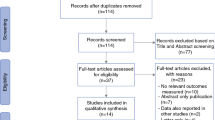Abstract
Background
Wide local excision of primary cutaneous melanoma usually provides clear margins and excellent local control. Nonclassical presentations of cutaneous melanoma, however, can challenge this treatment algorithm. Specifically, persistent melanoma-in-situ (MIS) at the margin not suspected clinically makes planning definitive wide local excision more difficult. We hypothesized that the use of punch biopsies as a mapping tool would allow us to obtain clear margins in these challenging cases.
Methods
Punch biopsies were performed at sites 1 to 2 cm from prior positive margins. Subsequent wide local excision was planned, including all punch biopsy sites with positive findings: atypical melanocytic hyperplasia, MIS, or invasive melanoma. The management of three patients was documented prospectively. Standard surgical techniques were used independent of an experimental protocol. Medical records were reviewed, and data were summarized under institutional review board protocol HIC 10803.
Results
The results of punch biopsies identified invasive melanoma, MIS, or atypical melanocytic hyperplasia in all three patients with MIS at the margins. All three mapping procedures were well tolerated and resulted in resection with negative margins in a single definitive resection.
Conclusion
Melanoma mapping with punch biopsy technique allows for definitive excision in cases when disease persists at the margins of the reexcision or in cases with unclear clinical examinations.





Similar content being viewed by others
References
Jeneby TT, Chang B, Bucky LP. Ultraviolet-assisted punch biopsy mapping for lentigo maligna melanoma. Ann Plast Surg 2001;46:495–9.
Kelly JW, Sagebiel RW, Calderon W, et al. The frequency of local recurrence and microsatellites as a guide to reexcision margins for cutaneous malignant melanoma. Ann Surg 1984;200:759–63.
Dicker TJ, Kavanagh GM, Herd RM, et al. A rational approach to melanoma follow-up in patients with primary cutaneous melanoma. Scottish Melanoma Group. Br J Dermatol 1999;140:249–54.
Pitman GH, Kopf AW, Bart RS, et al. Treatment of lentigo maligna and lentigo maligna melanoma. J Dermatol Surg Oncol 1979;5:727–37.
Bullen R, Larson PO, Landeck AE, et al. Angiosarcoma of the head and neck managed by a combination of multiple biopsies to determine tumor margin and radiation therapy. Report of three cases and review of the literature. Dermatol Surg 1998;24:1105–10.
Mahoney MH, Joseph M, Temple CL. The perimeter technique for lentigo maligna: an alternative to Mohs micrographic surgery. J Surg Oncol 2005;91:120–5.
Johnson TM, Headington JT, Baker SR, et al. Usefulness of the staged excision for lentigo maligna and lentigo maligna melanoma: the “square” procedure. J Am Acad Dermatol 1997;37:758–64.
Barlow RJ, White CR, Swanson NA. Mohs’ micrographic surgery using frozen sections alone may be unsuitable for detecting single atypical melanocytes at the margins of melanoma in situ. Br J Dermatol 2002;146:290–4.
Albertini JG, Elston DM, Libow LF, et al. Mohs micrographic surgery for melanoma: a case series, a comparative study of immunostains, an informative case report, and a unique mapping technique. Dermatol Surg 2002;28:656–65.
Ray CM, Kluk M, Grin CM, et al. Successful treatment of malignant melanoma in situ with topical 5% imiquimod cream. Int J Dermatol 2005;44:428–34.
Kirkwood JM, Strawderman MH, Ernstoff MS, et al. Interferon alfa-2b adjuvant therapy of high-risk resected cutaneous melanoma: the Eastern Cooperative Oncology Group Trial EST 1684. J Clin Oncol 1996;14:7–17.
Kirkwood JM, Manola J, Ibrahim J, et al. A pooled analysis of eastern cooperative oncology group and intergroup trials of adjuvant high-dose interferon for melanoma. Clin Cancer Res 2004;10:1670–7.
Kirkwood JM, Ibrahim JG, Sosman JA, et al. High-dose interferon alfa-2b significantly prolongs relapse-free and overall survival compared with the GM2-KLH/QS-21 vaccine in patients with resected stage IIB-III melanoma: results of intergroup trial E1694/S9512/C509801. J Clin Oncol 2001;19:2370–80.
Lens MB, Dawes M. Interferon alfa therapy for malignant melanoma: a systematic review of randomized controlled trials. J Clin Oncol 2002;20:1818–25.
Wheatley K, Ives N, Hancock B, et al. Interferon as adjuvant treatment for melanoma. Lancet 2002;360:878.
Delaney G, Barton M, Jacob S. Estimation of an optimal radiotherapy utilization rate for melanoma: a review of the evidence. Cancer 2004;100:1293–301.
Bene NI, Healy C, Coldiron BM. Mohs micrographic surgery is accurate 95.1% of the time for melanoma in situ: a prospective study of 167 cases. Dermatol Surg 2008;34:660–4.
Zitelli JA, Mohs FE, Larson P, et al. Mohs micrographic surgery for melanoma. Dermatol Clin 1989;7:833–43.
Moller MG, Pappas E, Zager JS, et al. Management of melanoma in situ with staged marginal and subsequent central tumor excision. Ann Surg Oncol 2008;15(Suppl 2):63.
Hazan C, Dusza SW, Delgado R, et al. Staged excision for lentigo maligna and lentigo maligna melanoma: a retrospective analysis of 117 cases. J Am Acad Dermatol 2008;58:142–8.
Hill DC, Gramp AA. Surgical treatment of lentigo maligna and lentigo maligna melanoma. Australas J Dermatol 1999;40:25–30.
Huilgol SC, Selva D, Chen C, et al. Surgical margins for lentigo maligna and lentigo maligna melanoma: the technique of mapped serial excision. Arch Dermatol 2004;140:1087–92.
Barlow JO, Maize J Sr, Lang PG. The density and distribution of melanocytes adjacent to melanoma and nonmelanoma skin cancers. Dermatol Surg 2007;33:199–207.
Gerger A, Hofmann-Wellenhof R, Langsenlehner U, et al. In vivo confocal laser scanning microscopy of melanocytic skin tumours: diagnostic applicability using unselected tumour images. Br J Dermatol 2008;158:329–33.
Chen CS, Elias M, Busam K, et al. Multimodal in vivo optical imaging, including confocal microscopy, facilitates presurgical margin mapping for clinically complex lentigo maligna melanoma. Br J Dermatol 2005;153:1031–6.
Author information
Authors and Affiliations
Corresponding author
Rights and permissions
About this article
Cite this article
Dengel, L., Turza, K., Noland, MM.B. et al. Skin Mapping With Punch Biopsies for Defining Margins in Melanoma: When You Don’t Know How Far to Go. Ann Surg Oncol 15, 3028–3035 (2008). https://doi.org/10.1245/s10434-008-0138-1
Received:
Revised:
Accepted:
Published:
Issue Date:
DOI: https://doi.org/10.1245/s10434-008-0138-1




